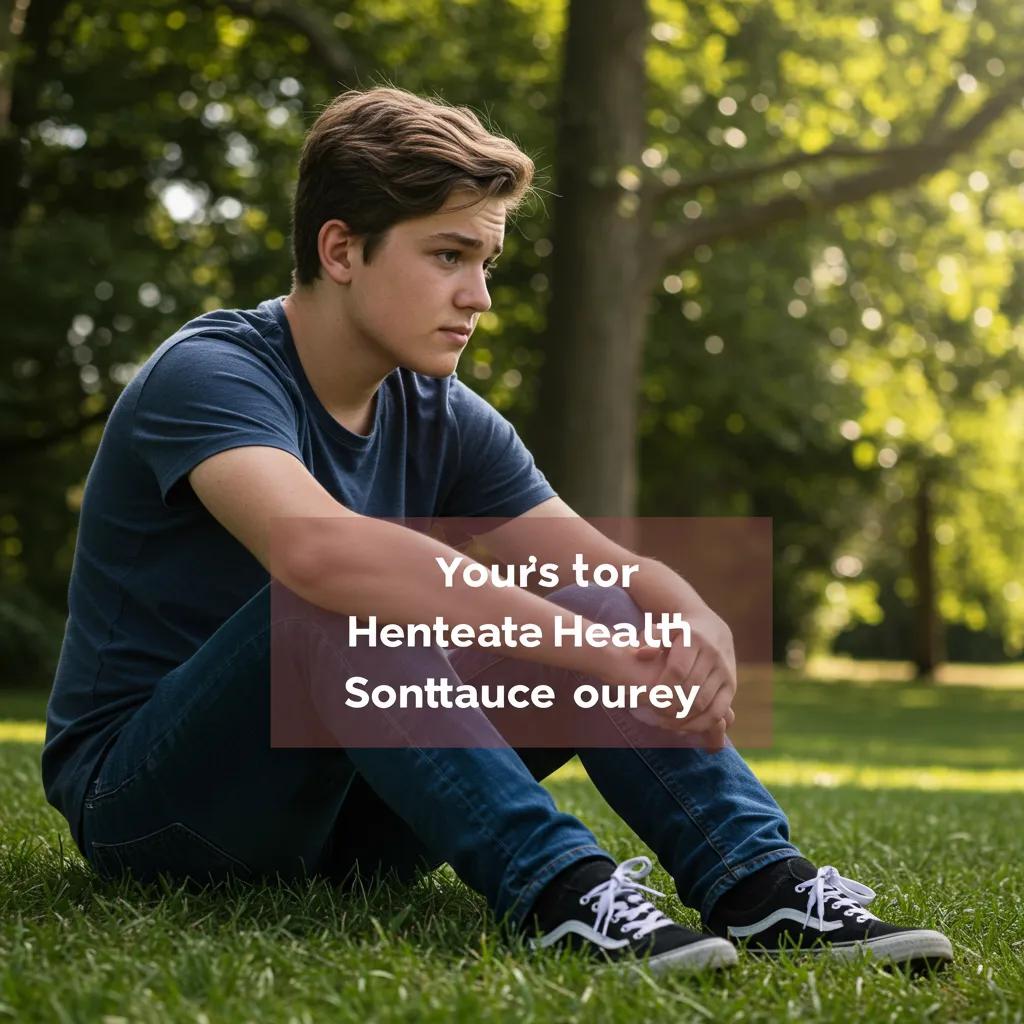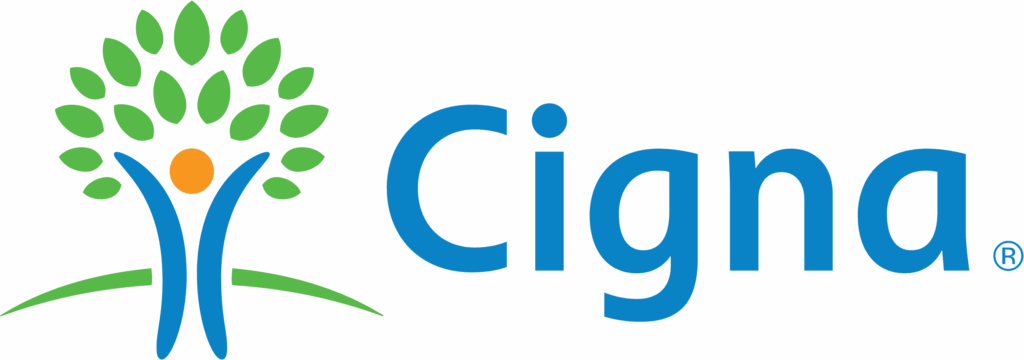
Adolescent mental health requires focused, developmentally informed care tailored to the unique needs of teenagers and their families. This article explains how comprehensive treatment pathways work for young people. Readers will learn about common mental health and co-occurring substance use challenges in teens, how levels of care differ, which evidence-based therapies produce measurable improvements, and practical steps families can take to begin treatment. This page centers on California Prime Recovery’s mental health treatment for teens in Orange County as an example of a Joint Commission-accredited, state-certified provider offering a full continuum of adolescent services. Families often struggle to choose the right level of care and to understand how therapies like CBT and DBT are adapted for adolescents; this guide promises clear definitions, comparison tables, and parent-focused checklists to reduce confusion. The article covers clinical presentations and why early intervention matters, program-level descriptions (residential, PHP, IOP, virtual IOP), therapy mapping and family supports, and a straightforward admissions and insurance orientation. Keywords such as teen mental health treatment Orange County, residential treatment for teens California, partial hospitalization program for adolescents, and virtual IOP for teens are used throughout to make this resource findable and practical.
Adolescent mental health challenges encompass mood disorders, anxiety disorders, trauma-related conditions, psychotic-spectrum illnesses, and substance-related disorders that interfere with functioning at school, home, and with peers. These conditions often arise from biological vulnerability, developmental changes, environmental stressors, and exposure to substances; understanding the mechanism—how symptoms disrupt cognition, emotion, and behavior—guides targeted interventions that restore safety and skills. The specific benefit of evidence-based adolescent programs is that they combine clinical assessment, psychiatric management, psychotherapy, and family involvement to reduce symptoms and improve real-world functioning. Below we define common disorders, discuss the interaction with substance use, and explain why early intervention improves outcomes; after defining disorders, the following subsection explains how co-occurring substance use alters treatment priorities.
Depression, anxiety disorders, bipolar spectrum conditions, trauma-related disorders, and early psychosis are among the most common psychiatric concerns in adolescents, each presenting distinct functional impacts. Depression in teens commonly shows as persistent low mood, changes in sleep and appetite, withdrawal from activities, and declining academic performance; these symptoms reduce motivation and increase risk for self-harm. Anxiety disorders manifest as excessive worry, panic attacks, social avoidance, and somatic complaints that impair participation in school and social life. Mood instability or signs of psychosis—disorganized thinking, hallucinations, or markedly impaired reality testing—are red flags that warrant urgent psychiatric assessment and often higher levels of care; understanding these presentations helps families recognize when escalation to inpatient stabilization or residential treatment may be necessary.

Substance use and mental illness in adolescents have a bidirectional relationship: substances can precipitate or worsen psychiatric symptoms, while untreated mental health disorders increase the risk of self-medicating with alcohol or drugs. Intoxication and withdrawal states can mimic or mask mood symptoms, complicating diagnosis and requiring medically supervised detoxification or stabilization when safety is at risk. Integrated treatment models that address addiction and psychiatric needs concurrently reduce relapse and improve psychiatric outcomes because they coordinate medication management, behavioral therapies, and family interventions. Given these dynamics, providers emphasize combined assessment and care planning—where necessary, medical detox or inpatient stabilization is followed by residential or partial hospitalization to continue integrated treatment.
Early intervention reduces the severity and chronicity of psychiatric disorders by interrupting maladaptive patterns before they become entrenched and by restoring developmental trajectories in school and relationships. Young brains are neuroplastic, which makes timely therapy and skill-building (for mood regulation, coping, and social functioning) particularly effective at producing durable improvements. Early treatment also lowers risks of academic decline, substance dependence, and self-harm; families that seek assessment promptly often enable interventions such as partial hospitalization or outpatient therapy that prevent crises. Recognizing warning signs and obtaining a comprehensive assessment creates a pathway to appropriately matched care levels and improves long-term outcomes for teens.
This section defines the core program levels used to treat adolescent mental health conditions and explains why matching intensity to clinical need improves safety and outcomes. Program levels vary by intensity, supervisory structure, and daily schedule; selecting the right level involves clinical assessment of symptom severity, risk, family support, and school needs. California Prime Recovery offers a full continuum that includes residential treatment, inpatient stabilization, medical detox, partial hospitalization (PHP), intensive outpatient (IOP), virtual IOP, and outpatient (OP) services—each designed to move adolescents through stabilization, skill-building, and community reintegration. Below are focused descriptions of what to expect in core adolescent programs; after describing residential care, the following subsection outlines typical residential components and routines.
Residential mental health treatment for teens provides a 24/7 supervised therapeutic environment where stabilization, intensive therapy, and recovery skills are delivered within a structured daily routine. Programs typically include individual therapy, group skills training, family therapy sessions, psychiatric medication management as needed, academic support, and recreational therapies that promote social and emotional growth. The constant supervision and on-site clinical staff offer a safe setting to address acute needs, reduce exposure to triggering environments, and to practice new coping strategies daily. Family involvement is integrated through scheduled family therapy and discharge planning to ensure gains generalize to home and school settings.
Introductory note: The table below compares program levels to help families decide which setting matches their teen’s needs.
| Program Level | Who It’s For / Intensity | Typical Duration | Core Components |
|---|---|---|---|
| Residential Treatment | Teens needing 24/7 supervision and stabilization | Weeks to months depending on needs | Individual & group therapy, family sessions, academic support |
| Partial Hospitalization (PHP) | Teens requiring intensive daytime treatment without overnight stay | Several weeks | Multi-disciplinary therapy, medical oversight, school coordination |
| Intensive Outpatient (IOP) | Teens needing frequent therapy while living at home or in residence | Weeks to months | Group & individual therapy, skill-building, relapse prevention |
| Virtual IOP | Teens who need IOP-level therapy but face geographic/transport barriers | Weeks to months | Telehealth-delivered groups, individual sessions, family check-ins |
Partial hospitalization programs (PHP) provide structured daytime programming—often several hours a day across multiple days per week—designed for adolescents who need concentrated clinical contact without overnight residency. PHPs combine multidisciplinary group therapy, individual counseling, psychiatric oversight, and practical skill-building for emotion regulation and school re-engagement; they also serve as step-down care after inpatient stabilization or step-up care to prevent hospitalization. PHP emphasizes coordination with families and schools, allowing clinicians to address academic accommodations and transitions while maintaining high-intensity therapeutic support. This structure supports stabilization and functional recovery while preserving family connection and community involvement.
Introductory note: The list below outlines components commonly found across PHP and IOP settings.
Intensive outpatient programs (IOP) provide multiple weekly therapy sessions that emphasize skill acquisition—such as CBT and DBT techniques—while allowing teens to continue living at home and attending school. Virtual IOP adapts this model to telehealth, increasing accessibility for families who face transportation or geographic barriers and maintaining continuity when in-person attendance isn’t feasible. The primary benefits include greater flexibility for school and family schedules, targeted relapse prevention skills, and regular clinical oversight without the need for residential placement. For families considering level of care, contacting admissions for an assessment can clarify whether residential treatment, PHP, IOP, or virtual IOP is the most appropriate match.
Customized adolescent treatment begins with a comprehensive biopsychosocial assessment that identifies psychiatric symptoms, substance use, developmental factors, family dynamics, and educational needs to create individualized goals and measurable outcomes. A multidisciplinary team—therapists, psychiatrists, nursing staff, case managers, and family therapists—collaborates to adjust intensity and modalities as the teen progresses, ensuring that care pathways move from stabilization to skill-building to outpatient maintenance. Progress is tracked through clinical measures and functional milestones like school re-engagement and decreased crisis incidents, allowing treatment teams to modify plans responsively. This assessment-driven approach ensures adolescents receive the right level of care at the right time.
Evidence-based psychotherapies form the backbone of adolescent mental health treatment because they target the mechanisms underlying symptoms and teach durable skills. Cognitive Behavioral Therapy (CBT), Dialectical Behavior Therapy (DBT), and trauma-informed care are core modalities; each operates through specific mechanisms—CBT modifies thought-behavior cycles, DBT builds emotion regulation and distress tolerance skills, and trauma-informed care prioritizes safety and pacing to avoid retraumatization. California Prime Recovery integrates these therapies into adolescent programming to produce measurable symptom reduction and functional gains. The next subsection details how CBT is adapted for teenagers and what outcomes families can expect.
Cognitive Behavioral Therapy helps teens by identifying and restructuring unhelpful thought patterns that drive anxiety and depressive behaviors, thereby altering emotional responses and improving coping. In adolescent adaptations, CBT uses age-appropriate examples, experiential exercises, and brief skills practice to fit shorter attention spans and developmental needs while building homework-based skills for real-world application. Outcomes typically include reduced depressive symptoms, decreased anxious avoidance, and improved problem-solving and social skills when therapy is delivered consistently. CBT’s measurable focus on thoughts, behaviors, and exposure tasks makes it especially effective for mood and anxiety disorders in teens.
Dialectical Behavior Therapy targets severe emotion dysregulation, self-harm behaviors, and impulsivity through four skills modules: mindfulness, distress tolerance, emotion regulation, and interpersonal effectiveness. For adolescents, DBT is adapted to include family modules, skills coaching, and developmental framing that addresses identity formation and peer relationships while teaching crisis-coping strategies. DBT’s group skills training combined with individual coaching reduces self-harm episodes and improves emotional stability, making it a high-yield approach for teens with borderline-pattern symptoms or frequent crises. Implementing DBT alongside family involvement enhances skill generalization to home and school contexts.
The effectiveness of family-based therapies, including those that incorporate DBT principles, is well-documented for a variety of adolescent mental health challenges.
Empirically Supported Family-Based Therapies for Adolescent Mental Health
Family-based therapy protocols, supported by a growing body of empirical evidence, have been developed for a range of adolescent problems. These include Functional Family Therapy (FFT), Multisystemic Therapy (MST) and Multidimensional Treatment Foster Care (MDTFC) for conduct disorder; Multidimensional Family Therapy (MDFT) and Brief Strategic Family Therapy (BSFT) for drug abuse; family focused cognitive behavior therapy for anxiety disorders and depression; Attachment- Based Family Therapy (ABFT) for depression; family focused therapy as an adjunct to pharmacological therapy for bipolar disorder; dialectical behavior (DBT) combined with multifamily therapy for self- harm; and the Maudsley Model of family therapy for anorexia and bulimia nervosa. All of these family- based therapy protocols aim to reduce individual and familial risk factors which exacerbate adolescent problems, and enhance protective factors which promote resilience and recovery from psychological difficulties.
Cognitive-behavioral therapy with adolescents, 2006
Introductory note: The table below maps common therapies to adolescent uses and session formats to help families understand practical applications.
| Therapy | Primary Uses / Age-Appropriateness | Typical Session Format |
|---|---|---|
| CBT | Depression, anxiety; highly adaptable for teens | Individual + skill-focused homework |
| DBT | Emotion dysregulation, self-harm, impulsivity | Group skills + individual coaching |
| Trauma-Informed Care | PTSD, complex trauma; adolescent-sensitive pacing | Safety-focused, integrative with EMDR when indicated |
| Family Therapy | Attachment, communication, relapse prevention | Multi-family groups or systemic sessions |
Trauma-informed care applies principles of safety, trustworthiness, collaboration, choice, and empowerment to prevent retraumatization and to support recovery for teens with trauma histories. Practically, clinicians screen for trauma exposure, pace interventions appropriately, and integrate evidence-based trauma therapies—such as trauma-focused CBT or EMDR—when clinically indicated, always emphasizing consent and stabilization first. Programs ensure predictable routines and transparent communication to build safety, while adapting exposure or processing interventions to a teen’s developmental level. Combining trauma-informed practices with family therapy promotes resilience and supports healthy attachment repair during recovery.
Family therapy modalities—such as structural family therapy and multi-family groups—focus on improving communication, setting boundaries, and aligning family goals with the adolescent’s treatment plan to support long-term recovery. Holistic supports like mindfulness training, art therapy, and recreational therapy address emotional expression, stress reduction, and identity development, providing complementary pathways for engagement when talk therapy alone is insufficient. These modalities accelerate recovery by creating supportive home environments and offering alternative means for teens to process experiences and build regulation skills. Integrating family and holistic supports into discharge planning increases the likelihood of sustained gains after program completion.
Family-centered supports help caregivers understand clinical needs, participate in treatment, and manage logistics so therapeutic gains transfer into daily life. Providers commonly offer parent education, scheduled family therapy, caregiver coaching, and resources for crisis management to increase caregiver efficacy and reduce relapse risk. Clear communication protocols and discharge planning help families prepare for reintegration and academic coordination, while parent support groups provide peer insight and coping strategies. The next subsection lists specific resources families can expect and how they typically function within adolescent treatment programs.
Parents and guardians typically receive structured education on adolescent illnesses, guidance on behavioral management, resources for medication questions, and training in supporting skills learned in therapy. Support often includes parent-only sessions, crisis planning templates, community resource referrals, and guidance on legal/consent issues where relevant; external authoritative resources like national mental health agencies can supplement clinical materials. These resources aim to reduce caregiver distress, improve consistency at home, and facilitate smoother transitions after discharge. Educated and supported families are better positioned to reinforce treatment gains and to notice early signs of relapse.

Family involvement is scheduled into treatment through regular family therapy sessions, parent skills workshops, and inclusion in discharge planning to set shared goals such as improved communication or supervised gradual autonomy. Clinicians balance adolescent confidentiality with necessary family engagement by explaining consent boundaries and obtaining appropriate permissions while keeping parents informed of safety concerns and progress. Parent coaching and collaborative goal-setting help caregivers practice new strategies and support adolescents’ academic and social re-entry. This collaborative model ensures that treatment extends beyond the clinic into everyday family interactions.
Key warning signs that a teen needs professional evaluation include sudden or severe changes in mood or behavior, withdrawal from friends and activities, declining grades, risky substance use, self-harm or suicidal talk, and any psychotic symptoms such as hallucinations. Immediate professional help is recommended when safety is compromised, when mood swings disrupt daily functioning, or when substance use produces acute toxicity or withdrawal—these situations may require medical detox or inpatient stabilization. Families should document specific behavioral changes and seek a timely assessment to match level of care to risk and need. Recognizing these signs early facilitates prompt intervention and better outcomes.
The admissions process for adolescent mental health care typically follows a stepwise pathway: initial contact and pre-screening, comprehensive clinical assessment, insurance verification and authorization, placement decision, and intake logistics—all designed to ensure clinical appropriateness and safe transitions. California Prime Recovery provides an admissions process that includes clinical assessment and insurance coordination to help families navigate placement decisions and funding questions. The practical questions families should prepare for include current medications, recent clinical evaluations, school status, and any safety concerns; next we outline clear steps families can expect when beginning admissions.
A straightforward admissions pathway usually involves these steps:
Following these steps helps families move from concern to appropriate placement with fewer delays.
Insurance interactions commonly involve determining whether a provider is in-network or out-of-network, clarifying prior authorization requirements, and assessing co-pay or out-of-pocket responsibilities; families should ask insurers about mental health benefits specific to adolescent levels of care. Common practical questions include coverage for residential treatment, PHP, IOP, and whether medical detox or inpatient stabilization require separate authorization. California Prime Recovery offers insurance coordination as part of the admissions process and advises families to prepare policy details to expedite verification. Understanding denial and appeal processes, and exploring alternative funding or payment plans when needed, can prevent avoidable delays in care.
The complexities of insurance coverage for adolescent mental health services necessitate careful inquiry and coordination with providers.
Joint Commission Accreditation and Quality Indicators in Children’s Mental Health
Nearly 60% (n=4,925) of the facilities were accredited by the Council on Accreditation (COA), the Commission on Accreditation of Rehabilitation Facilities (CARF), or The Joint Commission (TJC). Chi-square analyses were conducted to explore relationships. Compared to non-accredited facilities, more accredited facilities reported greater number of admissions, acceptance of government funding and client funds, and implementation of several quality indicators. Policies with incentives for accreditation could influence accreditation rates, and accreditation could influence quality indicators. These results set the foundation for future research about the drivers of the accreditation phenomenon and its impact on children’s mental health outcomes.
A national perspective on exploring correlates of accreditation in children’s mental health care, 2017
| Insurance/Funding Option | Coverage Type / Common Questions | What Families Should Ask / Next Steps |
|---|---|---|
| Private Commercial Plans | In-network vs out-of-network mental health benefits | Ask about residential, PHP, IOP coverage and prior authorization steps |
| Public Programs | Varies by plan and state rules | Confirm adolescent mental health service coverage and provider networks |
| Self-Pay / Financing | Out-of-pocket or payment arrangements | Discuss payment options and available financial counseling |
| Appeals & Authorizations | Prior auth denials or limits | Ask provider to assist with documentation and appeals process |
Parents frequently ask about confidentiality policies for minors, how schoolwork is handled during treatment, medication management protocols, visiting policies, and what to pack for a stay—clear, concise answers help reduce anxiety. Confidentiality typically balances teen privacy with parental rights for safety-related information; schools can often provide assignments or credit accommodations coordinated through the program. Medication management is supervised by clinical staff with adjustments made in collaboration with prescribing clinicians; families should bring current medication lists to intake. Preparing for these administrative details streamlines the admission and supports clinical focus on recovery.
Families often prioritize accreditation, integrated care for co-occurring disorders, family involvement, and a full continuum of services when selecting a provider; these are key differentiators that influence quality and outcomes. California Prime Recovery is Joint Commission-accredited and state-certified, signaling adherence to recognized standards for safety, staffing, and clinical protocols that increase family confidence in care quality. The facility’s full continuum—from medical detox and inpatient stabilization to residential treatment, PHP, IOP, virtual IOP, and outpatient services—supports seamless transitions across levels of care and coordinated treatment planning. The following sections explain accreditation significance, integrated co-occurring disorder approaches, and the types of measurable progress families can expect.
Joint Commission accreditation indicates that a facility meets nationally recognized standards for clinical quality, safety, and operational procedures, encompassing protocols for medication safety, staffing competencies, and continuous quality improvement. For families, accreditation translates into structured policies around assessment, crisis response, and evidence-based practices, which in turn support consistent clinical outcomes and transparent safety measures. Accreditation requires regular review and adherence to best-practice standards, offering an external benchmark for program quality that complements clinical expertise. This level of oversight reassures families that clinical programming follows established guidelines for adolescent behavioral health services.
An integrated dual-diagnosis model treats substance use and psychiatric disorders simultaneously by coordinating medication management, addiction-specific therapies, and mental health interventions within the same care plan. Practical examples include combining medical detox or inpatient stabilization when needed, transitioning to residential or PHP for continued integrated therapy, and then stepping down to IOP or OP with ongoing case management. Coordination across medical and behavioral teams ensures continuity of care, reduces the chance of relapse, and addresses underlying psychiatric contributors to substance use. Families benefit from a single, coordinated treatment pathway rather than fragmented services across multiple providers.
While specific client stories and contact details are not provided here, families can expect clinicians to track measurable outcomes such as symptom reduction on standardized scales, improved school attendance and performance, decreased crisis events, and successful transitions to lower-intensity care. Programs typically document functional milestones—reduced self-harm incidents, sustained abstinence from substances, and re-engagement in social and academic activities—to demonstrate progress. Families are encouraged to ask programs about outcome metrics and anonymized aggregate data during admissions to judge program effectiveness. Requesting this information helps caregivers set realistic expectations and participate actively in treatment planning.
Families seeking further information should be prepared with a concise summary of clinical concerns, a list of current medications, recent clinical records, and insurance details to expedite conversations with admissions and clinical staff. California Prime Recovery is located in Orange County, California, and offers admissions assessment and coordination services; families should contact admissions to obtain the facility’s exact location, phone number, and scheduling options. Preparing documentation and questions about levels of care, therapy modalities (CBT, DBT, trauma-informed care), and insurance coverage improves the efficiency of the inquiry and helps admissions determine appropriate next steps.
The facility is based in Orange County, California; specific address and phone number details are available directly from admissions upon request. Before contacting admissions, gather pertinent information—teen’s age, presenting concerns, recent treatment history, medications, and insurance details—to streamline triage and pre-screening. Asking about available levels of care (residential treatment, partial hospitalization (PHP), intensive outpatient (IOP), virtual IOP, outpatient (OP)) and typical timelines will help families plan for assessments and placement. Clear preparation reduces delays and enables an early clinical assessment to determine the best pathway.
Scheduling an initial consultation typically involves an intake call or form followed by a comprehensive clinical assessment with a licensed clinician to determine appropriate level of care and immediate safety needs. During the assessment, expect questions about psychiatric history, substance use, current symptoms, family dynamics, and schooling to inform placement recommendations and any urgent interventions. California Prime Recovery offers admissions assessment and insurance coordination to guide families through scheduling and next steps; preparing documentation and a short timeline of concerns facilitates faster placement decisions. Following assessment, clinicians will recommend an individualized treatment plan and next steps for admission if indicated.
Virtual resources such as virtual IOP and teletherapy provide adolescents with continued access to intensive therapy and family check-ins when in-person attendance isn’t practical, and they support continuity of care during transitions. Online parent education materials and virtual family sessions enable caregivers to participate in treatment and to receive coaching on supporting recovery from a distance. For successful telehealth participation, ensure a private, distraction-free space, reliable internet connection, and a device with audio/video capability; clinicians will provide guidance on privacy and technical setup. Virtual options increase accessibility and help maintain therapeutic momentum when geographic or logistical barriers exist.
We are 100% in Network Provider. Most of our clients pay $0 out of pocket.



